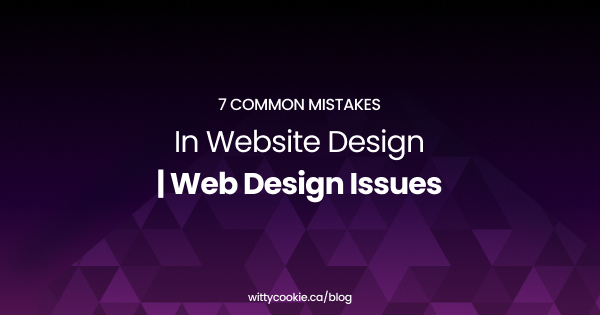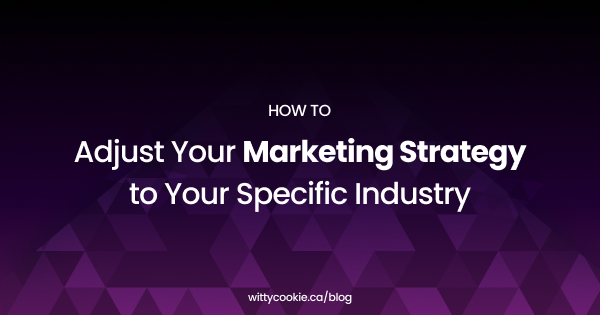7 Common Mistakes in Website Design | Web Design Issues
Importance of Getting Your Website Right
Your website is a vital asset for your marketing and branding efforts. Companies with poorly designed websites or have websites with simple design mistakes or web design issues can easily lose thousands of dollars in short-term sales as well as lose future potential revenue due to a loss of long-term sales. These negative effects due to such simple mistakes and problems with websites can be detrimental to the survival of your business. This consequently highlights the importance of having a well designed and properly functioning website. Given this importance, here are some common mistakes in website design to look out for when developing and designing your website in order to improve website performance and the utility of your website. These mistakes oftentimes have easy repairs and can instantly improve website performance.
Common Mistakes in Website Design
1. Not understanding your target market
Before designing a website, it is vital for you to understand your target market and the specific consumer segment you are aiming to market to. If you don’t understand who you are building your website for, you inhibit yourself from being able to create a successful website for your intended audience and purpose – you are not able to build a website for everything and everybody.
For example, if your target market is older, perhaps the font size should be larger for higher legibility. Or, if your product is geared towards a younger demographic, then it would be wise to prioritize catering your website to be smartphone compatible. Not only is understanding your target audience important for website design, it is also influential in the way you analyze their behaviour on your website as different demographics react differently to different stimuli.
2. Design is too busy or flashy
A good website doesn’t just mean looking good and having flashy graphics. While a website’s aesthetics are important, it is also important to influence the user’s attention in terms of where you want the user to look and what actions you want the user to commit. When visitors visit your website, you want to ensure that you answer their questions and that your website can efficiently and effectively sell and market your products and/or services well. When developing your website and thinking about the website page layout and design of your site, make your design functional on top of pretty looking
3. No clear call to action
In order to make your users do what you want them to do, you need to tell them what you want them to do. A good website should be able to effectively influence and persuade a user to convert and complete the actions the website was originally designed and developed for. Make your calls to actions easy to understand and quick to find to better ensure that users convert the way you want them to. To read more on calls to action and how to use them effectively, check out this article by AdEspresso!
4. Paying too much or too little for your website
Although people understand the importance of having a good online presence it is often hard to find a good balance when deciding how much time, effort, and money to use to get their desired website. Don’t get distracted by expensive agencies who work with big brands as they might not necessarily be able to help small businesses who are more ROI focused. Instead, their services might just result in you paying too much. Do your research to ensure that you are getting the best possible result and product without needing to spend excessively.
5. Out-of-date content
Customers expect your website to contain the latest information about your products, services, and company. If your website is not updated, customers might assume that you are not in business any longer, or that you simply aren’t innovative and ahead of the competition. Having an out-of-date or non-responsive website heavily impacts the reputation of your website. Your content must address the needs of your customers (or potential customers) and be updated as things change. If you have a blog, updating it at least once a week – if not more – can help you drive visitors to your website, keep search engines happy, and improve website performance. Additionally, avoid putting links to your Facebook or Twitter pages if you only have a small following. People may think your business is too small and end up not hiring you.
6. Trying to target everyone
This goes back to knowing your target market; your website will be a mess if you try to accommodate every kind of visitor you might end up getting. It’s best to figure out your most frequent users and focus on creating the best possible experience for them. If you try to help everyone, it is likely you will end up helping no one.
7. Taking the DIY route
Your website is often your customers’ first impression and experience with your brand. If you don’t have any design experience, it is incredibly risky to design a professional-looking and well-functioning website independently. Don’t allow your customer to make assumptions about your business because of a poorly designed website.
Want a professional website? Check out WittyCookie’s award winning website design and development services.



